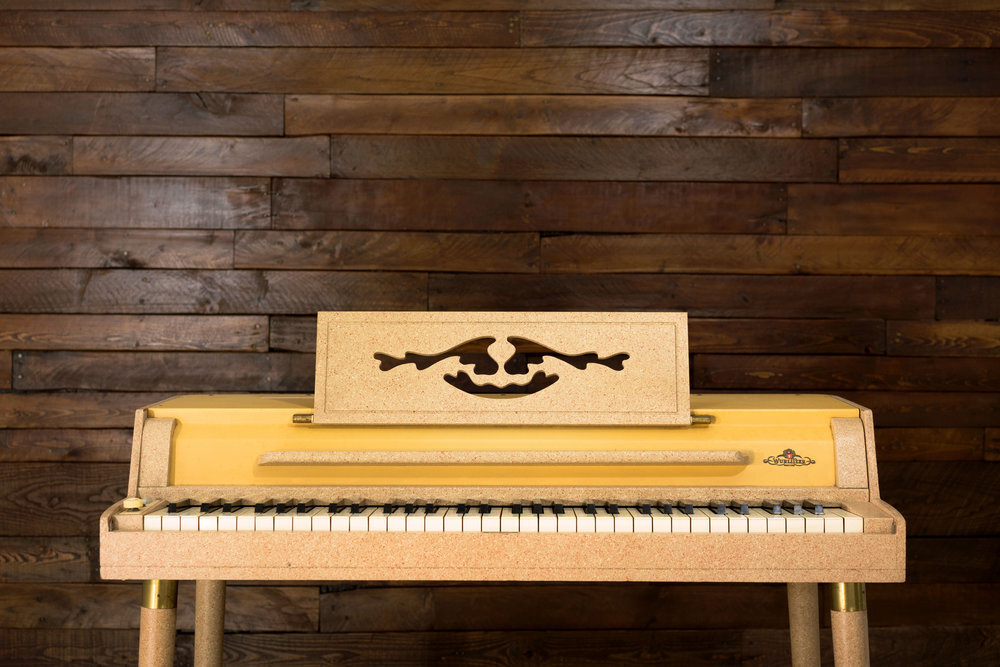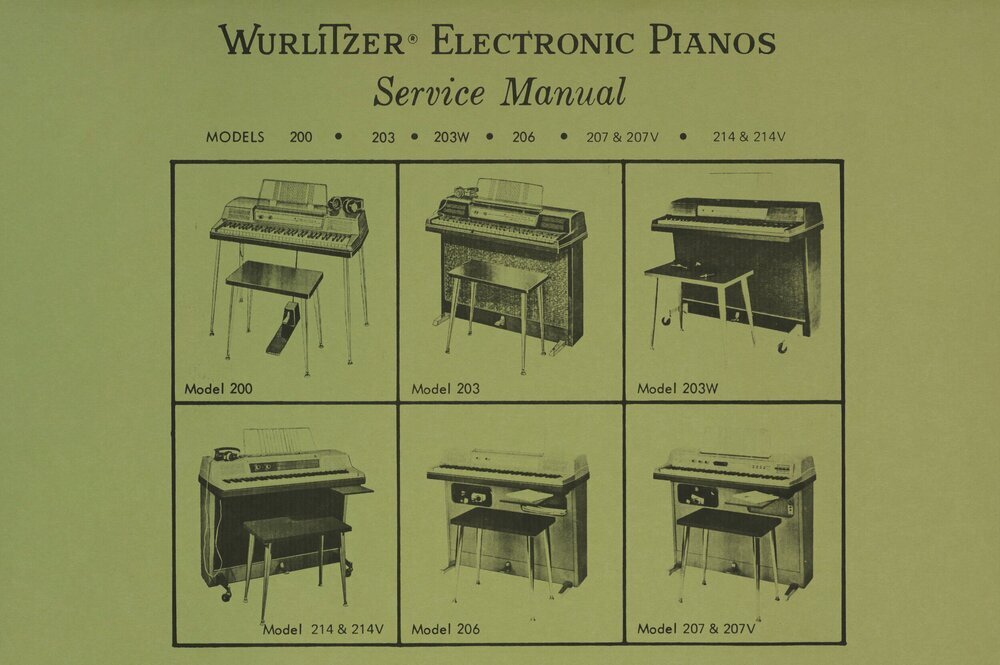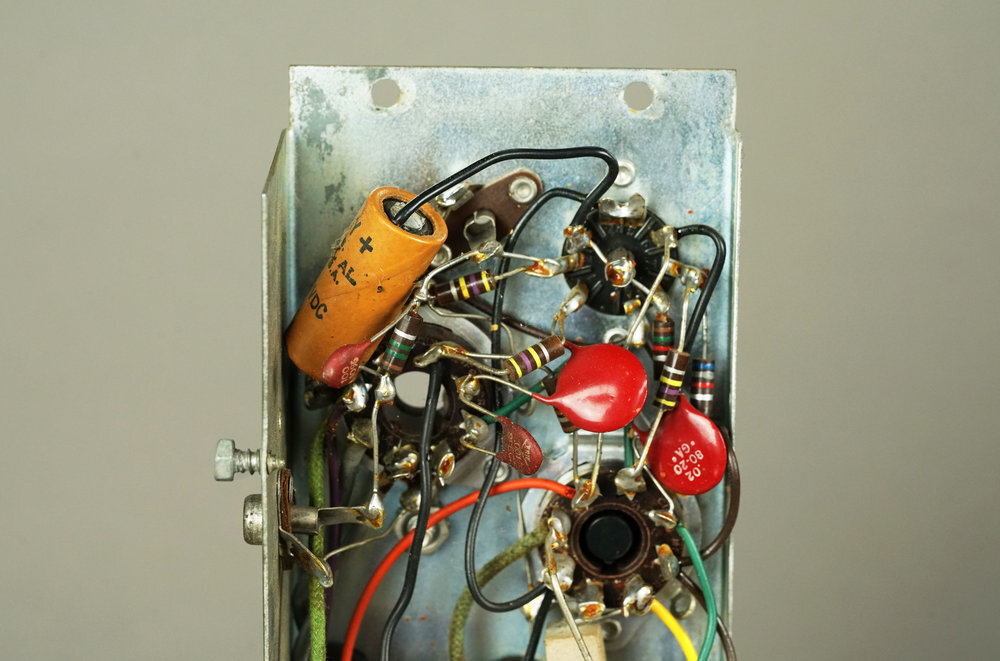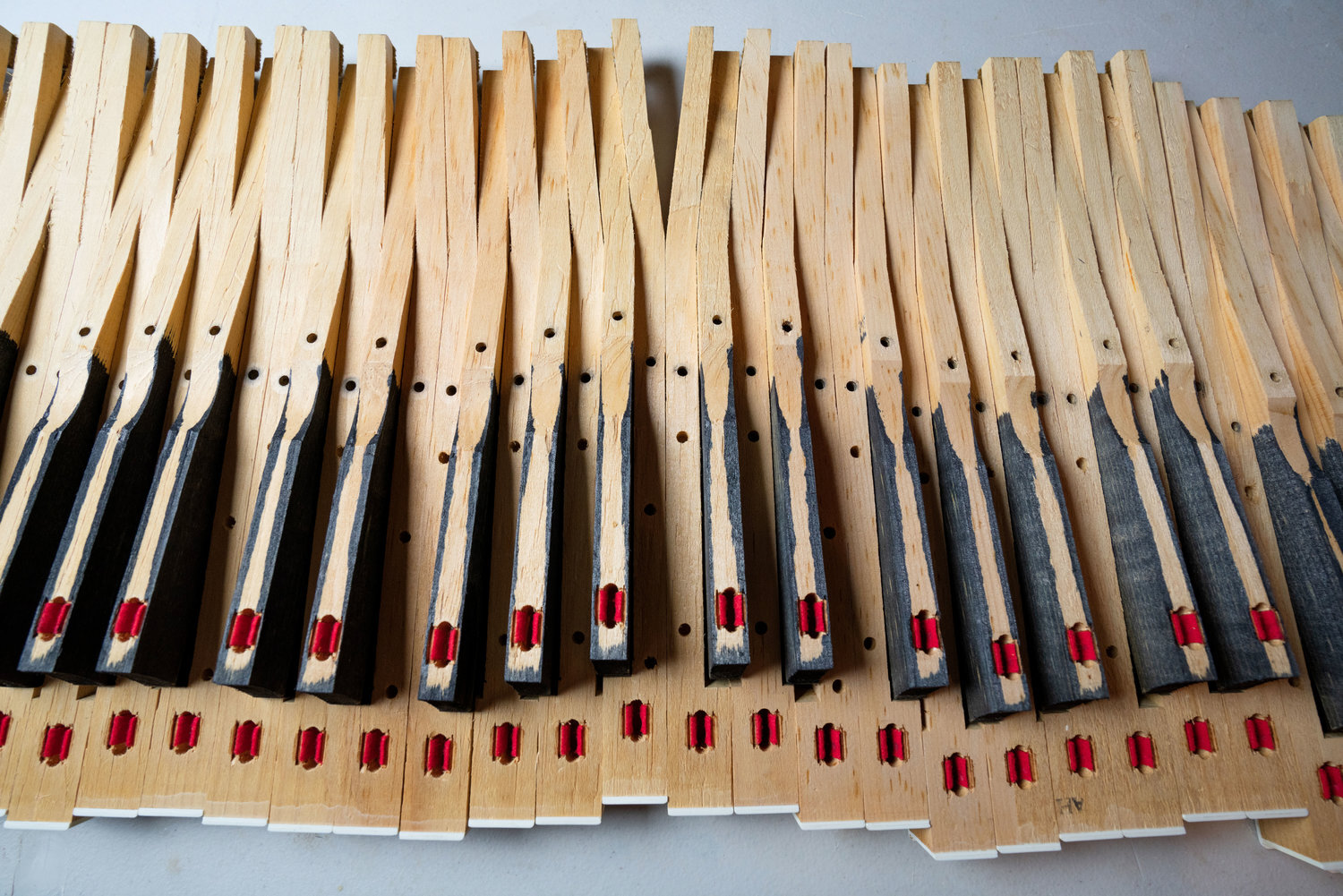The Wurlitzer 120 Pilot Light: a Neon Glow Lamp
The pilot light in all Wurlitzer 120 Electronic Pianos is unique. You may notice that when you turn on your 120 the lamp takes a few extra seconds to turn on. Likewise, when turning the amp off the pilot light may take a few seconds to turn off. It kind of does its own thing. That is because the pilot light (or lamp) is a neon glow lamp. Just when you thought the 120 couldn’t get any cooler, it has its very own neon sign to let you know when its on.
Detail of the neon pilot light as pictured in the Wurlitzer 120 schematic.
Side note: the 200 series Wurlitzers and the 140B both also use neon glow bulbs for their pilot lights but they are hidden behind small jewel lenses and don’t have the same dramatic exposed effect the 120 has when firing up.
Neon was discovered in 1898. Almost immediately it’s discoverers, William Ramsay and Morris W. Travers noticed that the gaseous neon emitted an amber or crimson color when excited electrically. Could you imagine discovering neon just twenty years after Thomas Edison patented the first ever light-bulb?
“The pilot lamp, located on the left keyblock, is Neon and should last indefinitely. It is a normal characteristic of this type lamp to light up and go out rather slowly.”
Most early tube amplifiers used miniature incandescent bulbs with T3-1/2 bases that fit into bayonet pilot light holders. In fact, many hand-wired tube amp builders today still choose incandescent bulbs (such as the Eiko #47) for it’s availability and the warm light it emits. Incandescent light does have a more vintage look than LED, and since building a hand-wired tube amp is a throwback, why not choose a throwback light source? Both incandescent bulbs and LEDs are readily available and inexpensive, but neon lamps are becoming more and more scarce as they are no longer in production. So what to do if your Wurlitzer 120 light goes out?
New-old-stock neon pilot lights of the type used by the Wurlitzer 120.
Wurlitzer states right in their 120 service manual that they chose a neon light because it “should last indefinitely”. This is a bold statement considering…nothing lasts forever? We can try to tackle that topic in another blog post, but let’s just say we’re still unsure one way or another. Under the right care, we have serviced 120 Wurlitzers, that are now rounding 63 years old and their original pilot lights are still going strong. That said, some incandescent pilot lights from the same year are still glowing brightly as well. This could be in part due to the low hours they have clocked compared to, say, a house light. Either way, as long as the gas (which is a mixture of neon and other gases) remains enclosed in the capsule and the two electrodes are firmly intact, there isn’t much to stop it from glowing.
The Wurlitzer 120 Neon Glow Lamp, specifically
This pilot light was unique in that the hard plastic diffusing lens and the ‘bulb’ are manufactured as one unit and are bonded together in a way that forcing them apart would destroy the lamp. The translucent plastic lens has a decorative atomic striped pattern — and actually resembles a doorbell. The pilot lamp, located in the left cheek block, is enclosed in a hard plastic housing mounted with two rivets (they really meant indefinite) and connected to the circuit with two solder lugs. One lug is connected to ground via a 220k resistor and the other lug is connected via pin 6 of the wiring harness to the power supply.
Further Reading
Browse all of our articles on restoring vintage gear. Or, click on an image below.







